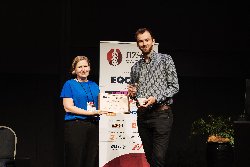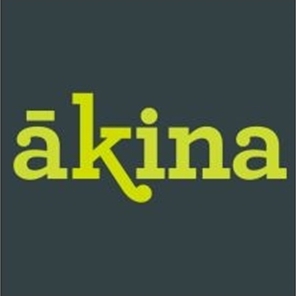First home buyers and low supply remain key market forces
The winter chill has undoubtedly put the brakes on value
growth and market activity, but annual growth rates remain
solid as key market drivers remain prevalent.
First home buyers continue to benefit from less competition and are driving modest value growth particularly in low-to-mid value areas. Constrained housing supply coupled with a stable interest rate environment is another key market driver supporting a seemingly steady market.
The latest QV House Price Index shows nationwide residential property values have increased steadily over the past year by 4.8% although dropped by 1.6% in the three months to August. The nationwide average value is now $672,504. When adjusted for inflation, the nationwide annual increase drops slightly to 3.3%.
Meanwhile, residential property value growth across the Auckland Region increased by 0.7% year on year although they dropped by 0.4% over the past quarter. The average value for the Auckland Region is now $1,048,956. When adjusted for inflation, values dropped 0.8% over the past year.
For a full breakdown of the QV House Price Index figures for August, please click here
QV General Manager, David
Nagel said, “It appears to be very much business-as-usual
across the national property market, as low levels of supply
coupled with a record low interest rate environment drive
modest value growth across most
regions.”
“Affordability constraints continue to change buyer behaviour. We’re seeing an increase in demand for more affordable two-bedroom semi-detached units as well as apartments, particularly in our main centres. With population growth projected to continue to rise, I’d anticipate these types of properties will attract even more demand in future years, particularly in Auckland and Wellington City.”
“Many smaller provincial towns across New Zealand continue to see solid value growth, particularly in the lower North Island. Regions such as Rangitikei, Tararua, Masterton and South Taranaki are at the top of the list in terms of quarterly value growth.”
“The southern part of New Zealand, including Dunedin and Invercargill, are also seeing values steadily increasing. The regions value for money continues to appeal to a range of buyers even during the quieter months.”
“Overall, we’re anticipating value growth to remain flat or steadily grow across most regions. The winter period has certainly taken the heat off the market and naturally, we’d expect the Spring period to inject new energy into the market.”
“The market is currently experiencing polarising forces with key market drivers such as low interest rates, population growth and lack of supply, being countered by tightening credit conditions and a range of Government policy initiatives aimed at cooling the market.”
“Spring is going to be a very interesting time for the residential property market as we see what unfolds when a few more buyers and sellers enter the market.”
Auckland
Value growth
remains slow across Auckland's suburbs. North Shore values
rose 1.1% in the year to August although they dropped 1.1%
over the past three months. The average value there is now
$1,213,982.
The former Auckland City Council central suburbs rose 0.7% year on year and were 0.2% down over the past three months and the average value there is now $1,240,833. Waitakere values stayed relatively flat year on year but they decreased slightly by 0.4% over the past three months. Manukau decreased by 0.1% year on year and by the same amount over the past three months; Papakura values rose 5.5% year on year and by 0.1% over the last quarter and the average value there is now $703,125; Franklin values increased 1.9% year on year and Rodney values were up slightly 0.4% year on year.
QV Auckland Senior Consultant, James Steele said, “The fall in investor activity has opened up space for first home buyers in the entry-level market, with properties readily available under $650,000 in previously investor-driven areas.”
“As we enter spring, those who have been waiting out winter before putting their properties to market are starting to appear. However, given that there are still few external pressures on buyers to sell, it is unlikely that we are going to see an oversupply of listings.”
“We are continuing to see a high proportion of properties come to market as price by negotiation as opposed to auction. With less demand, sellers are adjusting expectations and are more open to negotiation in order to get their property sold. In general this has caused prices to soften with the biggest variation from the peak shown in properties which are poorly presented or have other issues.”
“Well-presented properties which offer a good family living environment or those which have straightforward development potential are still transacting at reasonable levels however demand is patchy. The premiums paid prior to the 2016 LVR restrictions are rarely found under current conditions and we expect extended listing periods and more intense negotiation to continue given suppressed demand. Overall, a range of market forces are combining to keep values at stable levels.”
“As expected, we have seen minor fluctuations in price with some downward pressure through the winter months coming from those who needed to sell. At this stage, any larger downward pressure on property prices is likely to come from regulatory change or wider economic risks.”
Hamilton
Hamilton City home
values rose 0.3% over the past three months and values
increased 2.7% in the year to August The average value in
Hamilton is now $559,190.
QV Hamilton Property Consultant Andrew Jaques said, “A shortage of listings remains although we’re seeing a slight boost in the number of properties being sold compared to last month.”
“The distribution of sales is fairly even although the northern suburbs – namely Rototuna and Flagstaff – remain more desirable and are selling in higher numbers. The majority of sales appear to be taking place in the low-to-mid priced section of the market, from approximately $400,000-500,000. This is partly due to a growing portion of first home buyers, who are taking advantage of the government Kiwisaver savings withdrawal scheme and HomeStart grant.”
“There remains plenty of demand for duplex or townhouse style developments, particularly around the University of Chartwell and Hamilton East, where there is a lot of construction taking place. These types of properties offer a more affordable option, particularly for families or young professionals.”
Tauranga
Tauranga
home values rose 1.6% year on year and by 0.7% over the past
three months. The average value in the city is $705,383. The
Western Bay of Plenty market rose 3.5% year on year and 0.8%
over the past three months. The average value in the
district is now $634,582.
Tauranga Property Consultant, Steven Dunn said, “A low number of listings recently has meant that multi-offers and strong sales prices are being achieved in many cases.”
“We have seen an increase in investor activity and first home buyers are less active, which could be due to the lack of listings in the low-to-mid price bracket.”
“We’re anticipating a lift in listings and sales volumes as we settle into Spring over the coming month, so it’ll be interesting to see what impact this has on value growth.”
Wellington
Values across
the whole Wellington Region rose 8.5% in the year to August
and increased 0.9% over the past quarter and the average
value is now $656,676.
Wellington City values increased 7.4% year on year although they dropped by 0.2% over the past three months and the average value there is now $778,386. Meanwhile, values in Upper Hutt rose 10.5% year on year and 2.7% over the past three months; Lower Hutt rose 4.9% year on year and 1.5% over the past quarter; Porirua rose 7.2% year on year and 0.7% over the past quarter. Finally, the Kapiti Coast rose 8.3% year on year and 0.5% over the past three months.
QV Wellington Senior Consultant, David Cornford said, “Low listings coupled with a record low interest rate environment continues keep values stable.”
“The continued trend of rising rents is also putting pressure on people to purchase property. This is resulting in increased buyer competition, particularly in the low-to-mid priced section of the market in areas such as the Hutt Valley and Porirua where there is a strong presence of first home buyers. This in another factor contributing to modest value increases.”
“As affordability constraints become increasingly relevant, we’re seeing growing demand for different types of property. Two-bedroom, semi-detached units are selling particularly well, as they provide a more affordable option for young professionals or families. New builds or one and two bedroom modern apartments is also proving popular for the same reasons.”
“With Spring arriving, I’d anticipate more properties to come into the market which will provide buyers with more choice and enable them to be more selective. Despite this likely increase in market activity, I am anticipating more subdued value growth in coming years as affordability challenges put the brakes on.”
Christchurch
It’s a
continuation of recent trends for Christchurch City, with
values either holding or dropping slightly. Values are
slightly up year on year although they decreased by 0.2%
over the past three months. The average value in the city is
now $494,476.
QV Christchurch Property Consultant Daryl Taggart said, “Values are holding as we come out of the quieter winter months. There is certainly plenty of market activity and some properties do appear to be selling relatively quickly. I would anticipate sales activity to increase over the warmer months although values should stay mostly the same.”
Dunedin
Values
in Dunedin continue their upward trend having increased
10.7% in the year to August and 1.7% over the past three
months. The average value in the city is $415,888
QV Dunedin Property Consultant, Aidan Young said, “There is certainly a shortage of listings across Dunedin City, which is likely to be a factor in many multi-offer scenarios taking place.”
“We’re continuing to see impressive results at auctions, where there is a good level of competition present. It’ll be interesting to see how the market changes over Spring, as we would generally anticipate a higher number of listings during this period.”
Nelson
Nelson residential
property values rose 9.3% in the year to August and by 2.0%
over the past quarter. The average value in the city is now
$588,140. Meanwhile, values in the Tasman District have also
continued to rise, up 8.7% year on year and 2.3% over the
past three months. The average value in the Tasman district
is now $585,198.
QV Nelson Property Consultant, Craig Russell said, “Values rose in August, following a relatively quiet winter. Market activity has increased over the past month, with both sales and listings up.”
“There are certainly particular areas where market activity is notably busy. Small manageable lifestyle holdings on the Waimea Plains have been highly sought after largely given their excellent location close to Richmond and flat contour.”
“There is also a lot of demand for central Nelson properties, particularly those up to $700,000. We’re seeing many examples of multi-offers and busy open homes for these types of properties. Finally, we’re seeing well-maintained character homes in good schooling areas sell at a premium price.”
Hawkes
Bay
Napier values rose 11.4% year on year and
1.0% over the past three months. The average value in the
city is now $511,891. Hastings values are also continuing to
rise up 8.1% year on year and 0.9% over the past three
months. The average value there is now $460,059.
The Central Hawkes Bay has also seen values rise 20.9% year on year and 5.9% over the past three months and the average value there is now $347,290.
QV Hawkes Bay Property Consultant Nicola Waldon said, “Market activity has certainly slowed over the winter months across Napier and Hastings, with many agents reporting the lowest number of listings since records began.”
“In saying this, the lower-to-med priced section of the market, properties up to $400,000, is attracting plenty of demand. There appears to be a sense of urgency from first home buyers to make their first step onto the property ladder.”
“The Central Hawkes Bay market remains busy, with multi-offer scenarios commonplace and many properties selling above expectations.”
“Coastal properties with a view, in areas such as Porongahau, Blackhead and Pourerere Beach, are selling well. High values in the city-centre also mean that people are seeking more affordable property in rural areas such as Waipawa and Onga Onga.”
Provincial
centres
In the North Island, it’s the regions
based in the central and lower part of the island that have
seen the greatest quarterly growth. Tararua, Rangitikei,
Masterton, South Taranaki, Ruapehu and Horowhenua are
examples of areas continuing to experience solid quarterly
growth in between 3.0% and 5.6% on top of strong annual
growth rates.
In the South Island, it’s the most southern regions which continue to see solid growth. Many parts of Dunedin and Invercargill are a more affordable option for people seeking property, particularly for those priced out of the Queenstown Lakes or Central Otago markets.
ends


 John Mazenier: Gaffer Tape And Glue Delivering New Zealand’s Mission Critical Services
John Mazenier: Gaffer Tape And Glue Delivering New Zealand’s Mission Critical Services Earthquake Commission: Ivan Skinner Award Winner Inspired By Real-life Earthquake Experience
Earthquake Commission: Ivan Skinner Award Winner Inspired By Real-life Earthquake Experience Reserve Bank: Consultation Opens On A Digital Currency For New Zealand
Reserve Bank: Consultation Opens On A Digital Currency For New Zealand NIWA: Ship Anchors May Cause Extensive And Long-lasting Damage To The Seafloor, According To New Research
NIWA: Ship Anchors May Cause Extensive And Long-lasting Damage To The Seafloor, According To New Research New Zealand Customs Service: A Step Forward For Simpler Trade Between New Zealand And Singapore
New Zealand Customs Service: A Step Forward For Simpler Trade Between New Zealand And Singapore Horizon Research: 68% Say Make Banks Offer Fraud Protection
Horizon Research: 68% Say Make Banks Offer Fraud Protection



